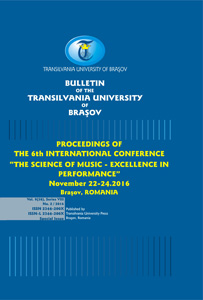The Religious Carol – from “Calendae” to “Colinda”
The Religious Carol – from “Calendae” to “Colinda”
Author(s): Dan Alexandru StrezaSubject(s): Fine Arts / Performing Arts, Music
Published by: Editura Universitatii Transilvania din Brasov
Keywords: Carol; Carolling; Calendae; Christmas; Lord's Nativity; Orthodox Chant
Summary/Abstract: The Feast of the Lord's Nativity or Christmas has a highly controversial history, because of the lack of old historical documents that would provide more details regarding its origins. However, the most plausible hypothesis states that the Feast of the Lord's Nativity is of equal importance with the Feast of Pascha, and was most probably instituted during the apostolic period in early Christianity. Christmas concentrates in the Romanian folkloric culture one of the richest and most complex ritual structures, which brings together people of all ages. The festive-ceremonial attitude, the dignity, the superior social status are the obvious prevailing themes in the message transmitted by traditional carols. Thus, the custom of going carolling with its plethora of meanings comes from the paleo-Christian tradition of the Latin speaking Eastern Roman Empire. In time, it evolved and was enriched by poetical texts that were arranged on specific melodies. These texts contained answers to issues and questions raised during the big theological disputes in the first Christian millennium, and later-on, to the inter-confessional frictions that followed.
Journal: Bulletin of the Transilvania University of Braşov, Series VIII: Performing Arts
- Issue Year: 9/2016
- Issue No: 2-Suppl
- Page Range: 289-296
- Page Count: 8
- Language: English

